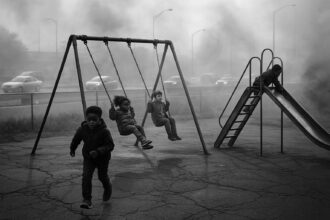As voters gathered at polling stations across England and Wales, notable for both canine companionship and significant political outcomes, the Conservative Party faced potential losses that could impact Rishi Sunak’s leadership.
During the local elections in parts of England and Wales on May 2, 2024, there was an engaging blend of political activity and social interaction as voters brought their dogs to polling stations. Despite typically being disallowed inside, dogs waited outside various voting locations, becoming a charming draw and symbolising wider participation in the democratic process. Featured dogs included Cinna, a rescue dog from Greece seen in south London, and first-time visitor Cookie, a terrier in Putney, London.
The tradition of dogs at polling stations has become a notable feature during election days, representing a lighter side of the voting process. Various dogs, such as Dax in Putney and Vancouver and Halifax, whippets dressed in matching outfits, were also observed near voting venues, highlighting the companionship between voters and their pets.
Meanwhile, polling concluded with the Conservative Party anticipating substantial losses which could critically impact Prime Minister Rishi Sunak’s leadership. Projections suggested the Conservatives might lose about 500 council seats, which is about half of the seats they were defending. These losses could threaten Sunak’s position and alter the party’s standing with voters. Key electoral tests included a parliamentary byelection in Blackpool South, following the resignation of former Tory MP Scott Benton. The Conservatives also faced challenges in retaining mayoralties in regions such as the West Midlands and Tees Valley.
The results from these local elections are expected to provide a broader indication of the political dynamics in England, potentially shaping the landscape leading into the upcoming general elections. The outcomes in council seats, mayoralty races, and police and crime commissioner roles are positioned to deliver essential insights into voter sentiments and party performances.













